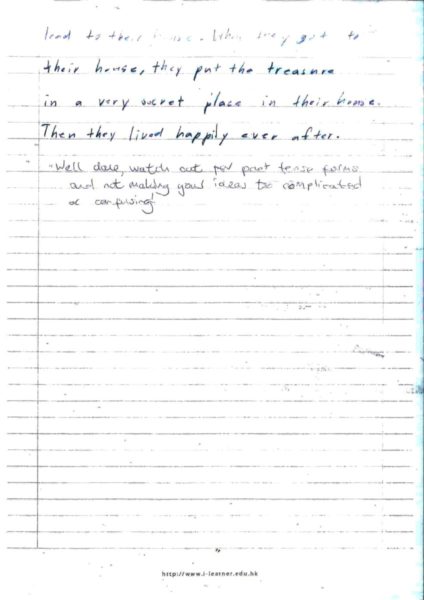Love to Write and creative thinking
TweetOut of all the summer courses that we teach at iLearner, the Love to Write creative writing course places particular emphasis on imaginative thinking. Not only does success in this course rely on a student’s strong and confident command of the English language, but a student must also think adventurously and creatively in order to create engaging and interesting pieces of writing. To a certain extent, the Love to Write course is so enjoyable to teach because it lets students combine their technical knowledge from the Advanced Grammar and Reading course with the analytical skills attained from Critical Reading and Writing.
Below is an exemplary piece of work from one of my students called Ryan, a student in P1. Above all, his writing displays incredible imagination. During the process of students planning their fictional stories, I would often ask Ryan to describe his ideas to me, at which point he would launch into an unstoppable flow of incredibly imaginative events, involving interesting characters and magical inventions. He certainly has no lack of inspiration for his stories, which I believe to be the most essential part of success in creative writing.
His ideas may be slightly convoluted and confusing at first, however through careful structuring and thought planning activities, students like Ryan can learn fairly easily to take control of their wild ideas and create stories which both make sense and are engaging to the reader.
Students like Ryan stand out because it is immediately obvious how much he enjoys reading in his spare time. Reading allows him to achieve the following:
- Gain wide exposure to advanced vocabulary
- Feel confident using verb forms that he has inferred himself
- Create interesting storylines, which can then be molded into more coherent narratives
Even though there are various minor spelling and grammar errors in Ryan’s work, these can easily be pointed out, and he can learn to rectify them. Furthermore, he will be more likely to remember these corrections than a less imaginative student could, because he has the context of his own story in which to remember how he can improve.
For the reasons above, I encourage all my students to read widely in their spare time, and Ryan’s work is proof of how this leads to successful creative writing.
Lesson 1 – The story of Li Sun and the robbers


Lesson 2 – Continuation of Li Sun’s story.


